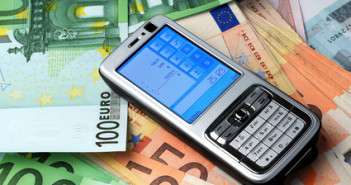The economic data calendar from around the globe remains sparse as we approach the half-way point of the trading week, though action will begin to pick up as we get ready to close out the month of August and the end of the week.  Yesterday’s close above the important 2,000 line for the S&P was enough to lift both the Nikkei and Hang Sang to moderate gains on their session as the diffident investor sentiment filtered through to the overnight Asian session.  The Yen was able to find some ground and stem the bleeding over the last five sessions that saw USDJPY attack the 104 handle; the pair is now edging back into the high-103s after the big dollar sees a minor setback in its uptrend.
It has been a bumpy overnight session for the Euro, which collapsed to the mid-1.31s against the USD during overnight trade after Deutsche Bank speculated the likelihood the European Central Bank would embark on ABS purchases at the policy meeting next week had increased, stemming from Draghi’s comments about inflation expectations at Jackson Hold last Friday. While hardly earthshattering news, the prospect of beginning ABS purchases last in Q2 as opposed to early 2015 emphasizes the ECB is becoming more concerned with the inflation outlook for the zone, and could potentially be looking to push forward the timetable of non-standard monetary policy actions in hopes of fighting disinflation.  While EURUSD did initially probe lower during the overnight session, the common-currency has seen a retracement on a successful defense of touted option barriers at the 1.3150 level, with the pair heading back into the high-1.31s.  Looking ahead to the remainder of the week, Germany will report its harmonized reading on inflation tomorrow, which will act as a precursor to the flash reading for the overall zone that will be released on Friday.  Expectations are to see the y/o/y figure for the bloc decelerate further to only a 0.3% gain, lower still from the 0.4% print registered for the month of July.  A softer print out of Germany tomorrow would ratchet up expectations there could be a miss for the overall zone as well, which in turn would increase rhetoric for faster action on the part of the ECB, weighing down the Euro in the process.
The Loonie has seen yesterday’s reversal pick-up momentum this morning, with macro-sales in EURCAD and GBPCAD driving demand for the commodity-linked currency.  The second straight session of gains for the Loonie comes ahead of second quarter GDP for the Canadian economy which is set to be released on Friday, with expectations of a solid 2.7% annualized increase.  Adding to the domestic drivers for the currency, the Bank of Canada is set to hold its next monetary policy meeting on September 3rd, with Poloz likely to reiterate his comments from over the weekend about inflation moving back towards the midpoint of the bank’s target, while acknowledging better North American growth prospects.  After testing down to the 200-day moving average overnight the pair is back flirting with the 1.0900 handle, looking towards the tomorrow’s release of the second estimate for Q2 GDP in the US as the next fundamental driver of price action.
As we get ready for the North American open, S&P futures are in limbo, having spent the better part of the European session pivoting around unchanged.  Hydrocarbons are building on yesterday’s gains as front month WTI tries to push back above $94/barrel, while yields on the 10-year US treasury stay depressed in the 2.37% region.  With not much fundamental data to parse through this morning, risk appetite in financial markets will likely take its cues from any geopolitical developments that might emerge and point to constructive de-escalation in Eastern Europe, before turning their attention back to a data-heavy end of the week.
Further reading:
USD/CAD: Weakens, Targets The 1.0850 Level
the ECB is becoming more concerned with the inflation outlook



